A) 7h; 7a
B) 7; 7
C) 7x - 7h; 7x - 7a
D) 7; 7x - 7a
F) None of the above
Correct Answer

verified
Correct Answer
verified
Multiple Choice
Evaluate or simplify the given expression. -sin(2 sin-1 x)
A) ![]()
B) ![]()
C) ![]()
D) ![]()
F) B) and C)
Correct Answer

verified
Correct Answer
verified
Multiple Choice
State the period of the function and graph.
-cos 8x
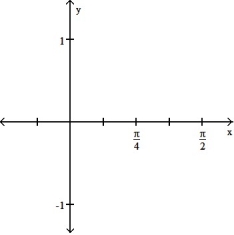
A)
Period ![]()
![]()
B)
Period ![]()
![]()
C)
Period ![]()
![]()
D)
Period ![]()
![]()
F) All of the above
Correct Answer

verified
Correct Answer
verified
Multiple Choice
Graph the function.
-G(x) = 
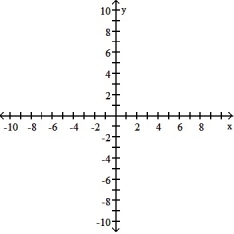
A) ![]()
B) ![]()
C) ![]()
D) ![]()
F) B) and C)
Correct Answer

verified
D
Correct Answer
verified
Multiple Choice
Graph the function.
-y =  (x - 2)
(x - 2)
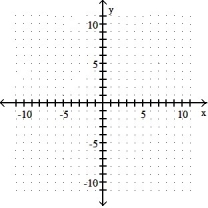
A) ![]()
B) ![]()
C) ![]()
D) ![]()
F) B) and D)
Correct Answer

verified
Correct Answer
verified
Multiple Choice
Solve for the angle θ, where 0 ≤ θ ≤ 2π -sin 2 - cos = 0
A) ![]()
B) ![]()
C) ![]()
D) ![]()
F) A) and C)
Correct Answer

verified
Correct Answer
verified
Multiple Choice
Solve the problem.
-The accompanying figure shows the graph of y =  shifted to a new position. Write the equation for the new graph.
shifted to a new position. Write the equation for the new graph.
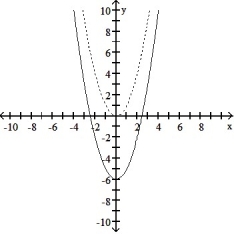
A) y = ![]()
B) y = x2 - 6
C) y = x2 + 6
D) y = ![]()
F) All of the above
Correct Answer

verified
Correct Answer
verified
Multiple Choice
Determine an appropriate viewing window for the given function and use it to display its graph.
-
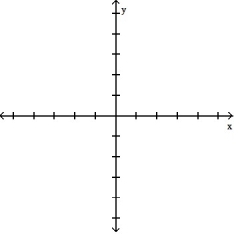
A) ![]()
B) ![]()
C) ![]()
D) ![]()
F) A) and C)
Correct Answer

verified
Correct Answer
verified
Multiple Choice
Graph the function.
-f(x) = 

A) ![]()
B) ![]()
C) ![]()
D) ![]()
F) C) and D)
Correct Answer

verified
Correct Answer
verified
Multiple Choice
Solve the problem.
-The accompanying figure shows the graph of y = -  shifted to a new position. Write the equation for the new graph.
shifted to a new position. Write the equation for the new graph. 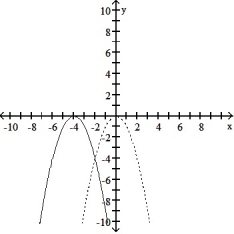
A) y = -x2 - 4
B) y = - ![]()
C) y = - ![]()
D) y = -x2 + 4
F) A) and B)
Correct Answer

verified
Correct Answer
verified
Multiple Choice
Solve the problem.
-A certain radioactive isotope decays at a rate of 2% per 100 years. If t represents time in years and y represents the amount of the isotope left then the equation for the situation is  In how many years will there be 86% of the isotope left?
In how many years will there be 86% of the isotope left?
A) 236 yr
B) 1400 yr
C) 700 yr
D) 754 yr
F) None of the above
Correct Answer

verified
Correct Answer
verified
Multiple Choice
Find the domain and range of the inverse of the given function.
-f(x) = 
A) Domain: [0, ) ; range: all real numbers
B) Domain and range: all real numbers
C) Domain: [ 2, ) ; range: [0, )
D) Domain: [ 4, ) ; range: [0, )
F) B) and D)
Correct Answer

verified
Correct Answer
verified
Multiple Choice
Evaluate or simplify the given expression.
-

A)
B) ![]()
C) ![]()
D) 0
F) None of the above
Correct Answer

verified
Correct Answer
verified
Multiple Choice
Determine an appropriate viewing window for the given function and use it to display its graph.
-f(x) = 
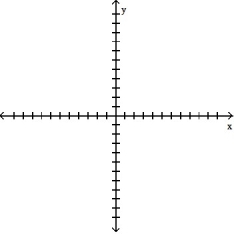
A) ![]()
B) ![]()
C) ![]()
D) ![]()
F) A) and C)
Correct Answer

verified
Correct Answer
verified
Multiple Choice
Use the Change-of Base Rule to find the logarithm to four decimal places.
- 2
2
A) 0.5000
B) -0.5000
C) 1.0000
D) 2.0000
F) A) and B)
Correct Answer

verified
A
Correct Answer
verified
Multiple Choice
Find the domain and range of the inverse of the given function.
-f(x) =  - 4
- 4
A) Domain: all real numbers; range: [ -4, )
B) Domain: [ -4, ) ; range: all real numbers
C) Domain: [0, ) ; range: [0, )
D) Domain and range: all real numbers
F) All of the above
Correct Answer

verified
Correct Answer
verified
Multiple Choice
Find the domain and range of the function.
-F(t) = 
A) D: [0, ) , R: (- , )
B) D: (- , ) , R: (- , )
C) D: (0, ) , R: (0, )
D) D: (- ,0) , R: (- ,0)
F) A) and C)
Correct Answer

verified
C
Correct Answer
verified
Multiple Choice
Use the inverse trig functions to express the angle in terms of the indicated unknown side.
- Use one of the inverse trig functions
Use one of the inverse trig functions  or
or  to express angle A in terms of c.
to express angle A in terms of c.
A)
A = ![]()
![]()
B)
A = ![]()
![]()
C)
A = ![]()
![]()
D)
A = ![]()
![]()
F) A) and B)
Correct Answer

verified
Correct Answer
verified
Multiple Choice
Solve for the angle θ, where 0 ≤ θ ≤ 2π
- =
= 
A) ![]()
B) ![]()
C) ![]()
D)
= 0, , 2
F) All of the above
Correct Answer

verified
Correct Answer
verified
Multiple Choice
Graph the inverse of the function plotted, on the same set of axes. Use a dashed curve for the inverse.
-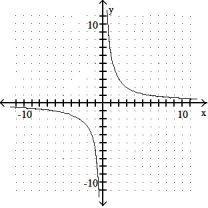
A) ![]()
B)
![]()
C)
Function is its own inverse. ![]()
D) ![]()
F) B) and C)
Correct Answer

verified
Correct Answer
verified
Showing 1 - 20 of 226
Related Exams